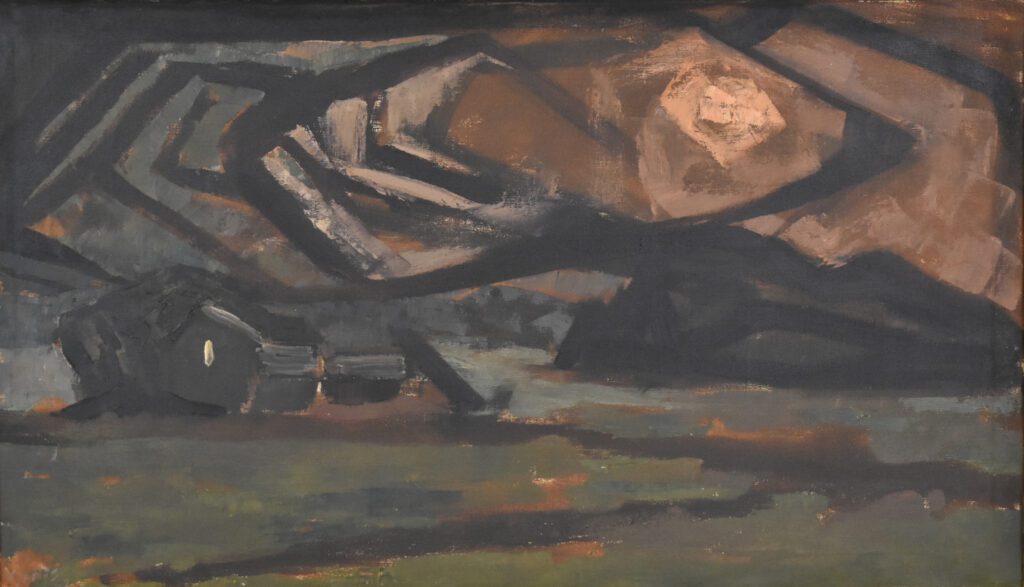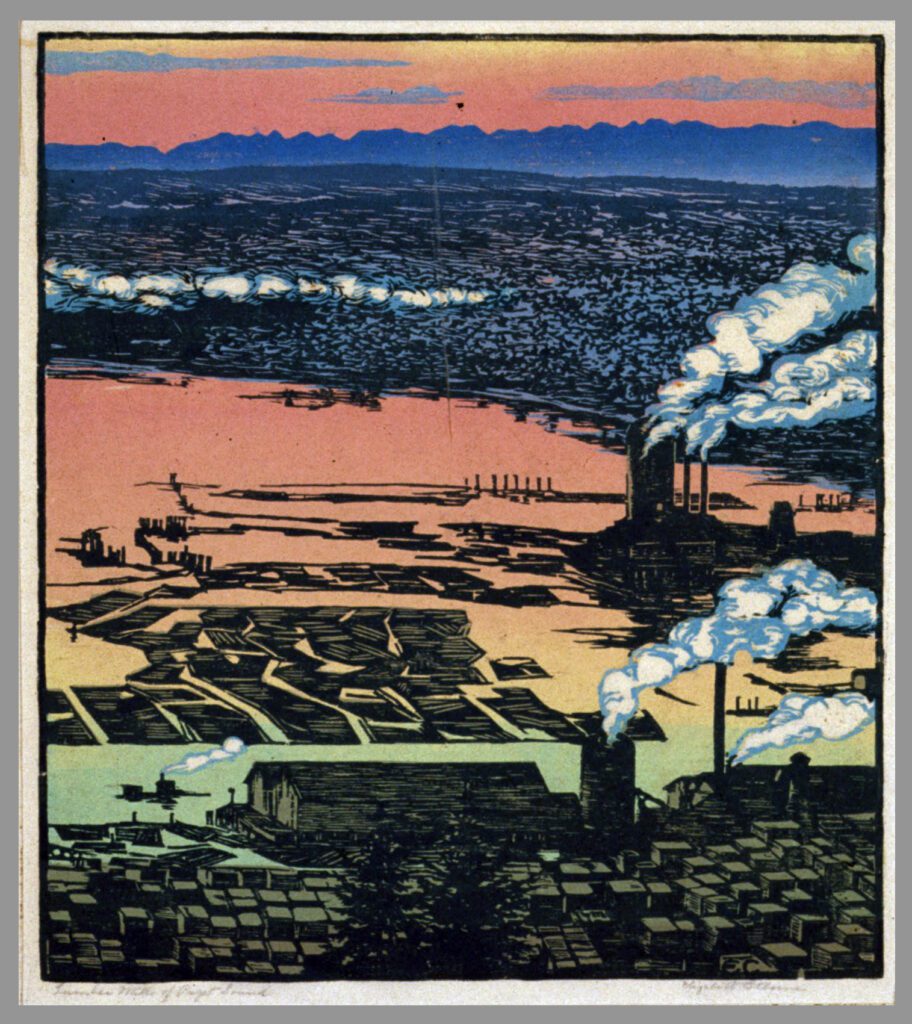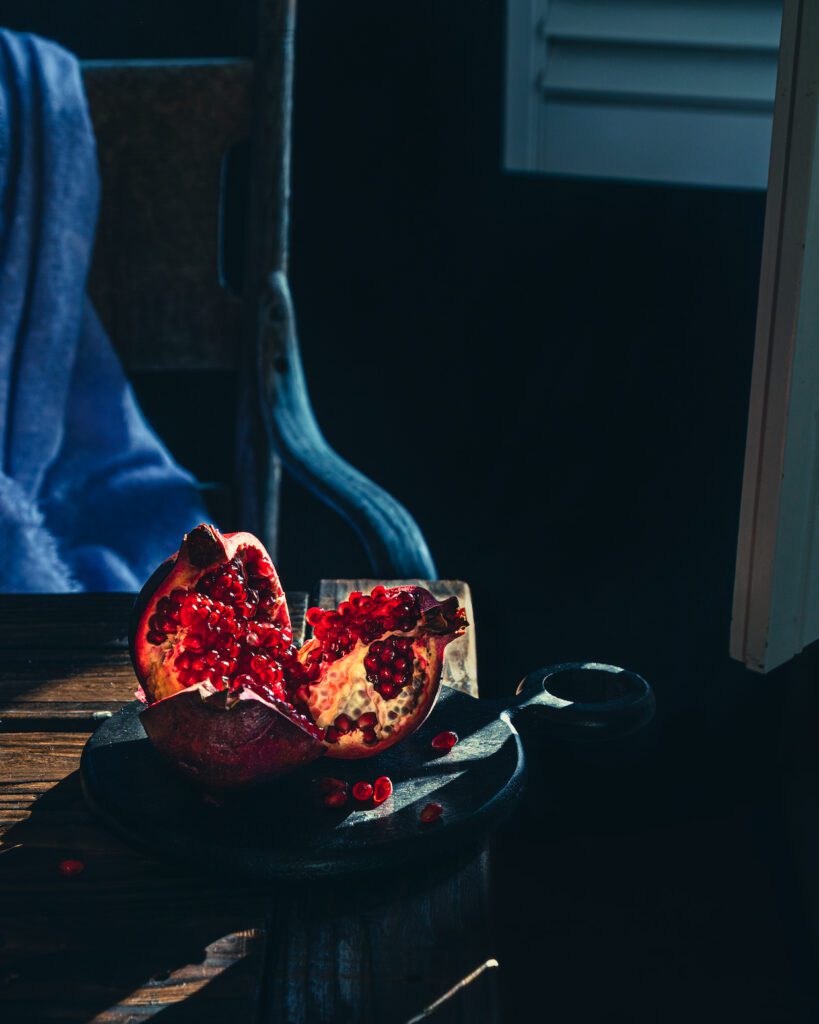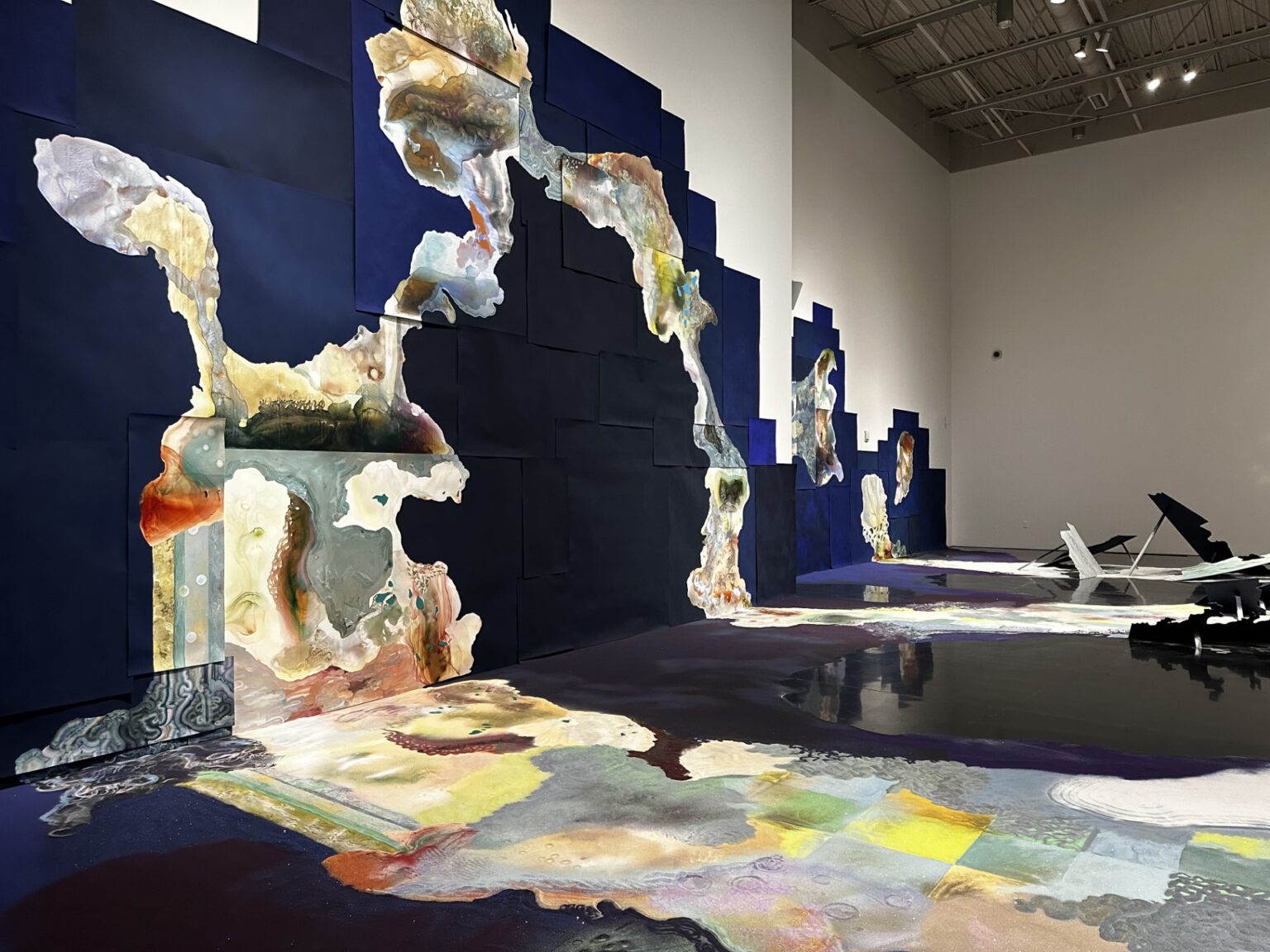Before entering Susan Murrell’s “Sift/Shift” installation at Whatcom Museum’s Lightcatcher Building, a sign on the door advises visitors they are about to enter an immersive exhibition, and should leave everything as-is to respect the space as the artist has envisioned it.
This advice comes in handy once people walk into the main gallery, which the Oregon-based Murrell spent eight days transforming from a white-walled box into a winding, abstract landscape that flows from the 22-foot-high walls onto the black marble floor. Colored sand is carefully strewn throughout, and triangular wood pieces resembling small mountains are also part of the installation.
Patrons must be careful where they step but are invited to immerse themselves in the oversized artwork, which also includes a sonic element designed to get people to stick around and listen, maybe even relax.
Murrell, who was in town for the opening reception Friday, June 23, and led a Saturday afternoon artist tour at the Lightcatcher, told attendees the sounds were created in a walk-in closet in her home, where she combined breathing, hand motions and elements such as glaciers halving and underground rivers for the full effect.
“I wanted it to be enough noise where it might quiet people down when they get in this space to pay attention and they might notice their own heartbeat, or their own breath, Murrell said. “Just slowing people down.”
Murrell built the installation specifically for the gallery space, and she hopes it inspires people to be co-creators of the landscape she built. One question she posited during the talk focused on whether the artwork on the walls was spilling onto the floor, or if it was regenerating itself from the floor back up to the wall. Basically, which way does it go?
In discussions following Murrell’s talk, one patron said he got the sense while viewing the installation of being on a trail and then wandering off of it.
“It was like experiencing the space you feel when you’re out in nature,” he said, “like weird boulders sticking out of the ground, pieces of moss, light, shadows and pools of water.”

“Sift/Shift” leaves plenty of room for imagination, as does the conjoining exhibition, “Coastal Views: California and the Pacific Northwest.” Although the myriad landscape works in this show are less abstract than “Sift/Shift,” they also draw viewers in with scenes from the 1800s to the present — acting as a sort of historical roadmap.
For instance, Euphemia Charlton Fortune’s “El Rancho del Camino (a.k.a. Hatton Ranch)” is a marvel of bright color and details. According to the artist notes next to the 1920 painting, Fortune was once thought to be one of the most avant-garde painters in northern California, and “today her work is considered an almost pure form of American Impressionism.”
Other California-based painters that take people back in time include Pedro de Lemos (“Moonlit Waters,” 1944); Mary DeNeale Morgan (“Tall Pines near Asilomar,” 1935); Jules Tavernier (“El Cuartel—Monterey,” 1875); and S.C. Yuan (“Point Lobos from Highlands Inn,” 1952).
Closer to home are works by Pacific Northwest artists such as Clayton James. His rustic and riveting “Skagit Valley Moon,” painted in 1957, is included in the exhibition Whatcom Museum Executive Director Patricia Leach put together to stimulate conversation about the similarities and differences between artists of note from California and the Pacific Northwest.

Bellingham-born painter Helen Loggie (“Moonlight Over Water,” 1920); John Cole (“Chuckanut Evening,” 1995); Richard Gilkey (“Chair and Pear”); Morris Graves (“Chair and Landscape,” 1935); Ree Brown (“Skagit Relic House,” 1992); Kenneth Callahan (“Northwest Landscape,” 1940); and Elizabeth Colborne (“Lumber Mills in Bellingham Bay,” 1933) are all names that will also likely sound familiar to those interested in history and the PNW art scene.
When wandering through the decades and centuries represented in “Coastal Views,” don’t neglect to stick your head into the small side room located in the middle of the gallery. Here, California-based artist Mina Afshari’s “Let it Shine” lives up to its name.

Although the photographs the Iranian-born artist took of produce and flowers procured from a farmers market near her Carmel, California, apartment are luminescent and lovely, a darkness to them cannot be denied. Her words, set among the lush photographs resembling Renaissance paintings, point to loss, abuse and trauma, but also exude hope for the future. Putting together each photo on her dining room table, she writes, “was like gathering the shattered pieces of myself from all those years ago.”
“Let it Shine” is Afshari’s first museum exhibition, but you wouldn’t guess it by the quality of the work. Her photographs depict a different kind of landscape — one of the mind brought to vibrant, vivid life. The photos may have been taken in the same locale, but they transport the viewer to a different place and time.
“Sift/Shift,” “Coastal Views” and “Let it Shine” show through Oct. 29 at Whatcom Museum’s Lightcatcher Building, 250 Flora St. Entry is $5–$10; visit for free during the next First Friday taking place Friday, July 7, throughout downtown Bellingham. Info: whatcommuseum.org.




